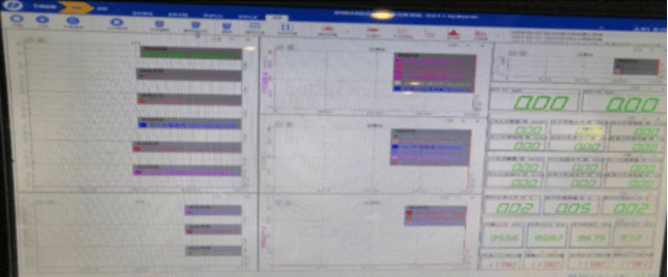Multi-Parameter Engine Testing & Monitoring Solution
1. Project Background and Challenges
In May 2024, an aviation research institute aimed to enhance the performance, reliability, and service life of an Il-76 transport aircraft engine. Comprehensive monitoring of key parameters such as temperature, pressure, corrosion, vibration, and stress under various operating conditions was required. The core challenges of the test included:
Multi-parameter synchronous monitoring: Simultaneous acquisition of vibration, pressure, speed, and other multidimensional data with high-precision time synchronization.
Real-time requirements: Real-time monitoring of engine status during testing to promptly detect anomalies and make decisions.
Environmental adaptability: The engine test bed featured strong electromagnetic interference, high temperatures, and high vibration levels, demanding extreme equipment reliability.
2. Solution: Dynatronic Dynamic Signal Acquisition System
The project utilized the Dynatronic Dynamic Signal Acquisition System as the core data acquisition device, building a complete multi-parameter integrated testing and real-time monitoring system.
System Configuration and Integration:
Sensor Layout:
10 acceleration sensors: Installed on the engine casing, bearing seats, and critical connection points to monitor radial and axial vibration.
4 pulsating pressure sensors: Mounted at the compressor outlet and turbine inlet to capture dynamic pressure fluctuations.
2 speed sensors: Monitored high-pressure and low-pressure rotor speeds, precisely correlating vibration and pressure data.
Data Acquisition Equipment:
The Dynatronic Dynamic Signal Acquisition System supported 16-channel synchronous acquisition with a maximum sampling rate of 200 kS/s and 24-bit resolution.
Built-in anti-aliasing filters and signal conditioning capabilities enabled direct connection to IEPE acceleration sensors and voltage-type pressure sensors.
Real-Time Data Processing and Transmission:
Dedicated software provided real-time data display, time/frequency domain analysis, and alarm threshold settings.
Data streams were transmitted in real time to a remote monitoring center via UDP protocol with a latency of less than 50 ms.
System Features:
High-Precision Synchronization: All channels employed synchronous sampling technology with a phase error of less than 0.1°, ensuring precise correlation between vibration and pressure data.
Strong Anti-Interference Capability: The system complied with military-standard electromagnetic compatibility requirements, ensuring stable operation in high-interference test bed environments.
Flexibility and Scalability: Supported cascading of multiple devices to meet future channel expansion needs.
3. Testing Process and Data Value
Test Execution
Tests were conducted under multiple operating conditions, including idle, cruise, maximum continuous thrust, and takeoff thrust.
Real-time monitoring of vibration velocity, acceleration spectrum, pressure pulsation, and speed parameters was performed.
Key Data Results
Vibration Analysis:
A resonance peak was identified near 90% speed of the high-pressure rotor, mitigated by adjusting support stiffness.
Total vibration values were below the ISO 10816 standard limits, validating engine balance performance.
Pressure Pulsation Analysis:
The pressure pulsation amplitude at the compressor outlet was less than 5% of the design value, indicating excellent aerodynamic stability.
No rotating stall characteristic frequencies were detected in the turbine inlet pressure spectrum.
Multi-Parameter Correlation Analysis:
Synchronized analysis of vibration and pressure data pinpointed abnormal vibrations originating from specific pressure fluctuation frequencies.
Decision-Making Support Value
Real-time data transmission via UDP to the monitoring center enabled remote collaborative analysis by technical support teams.
Engine control logic was optimized based on test results, extending overhaul intervals by 20%.
Data provided support for subsequent engine design improvements, reducing the number of test iterations.
4. Customer Benefits
All-in-One Testing Platform:
The Dynatronic acquisition system integrated signal conditioning, acquisition, and real-time transmission functions, simplifying system architecture and reducing deployment costs.
Real-Time Monitoring and Remote Collaboration:
UDP data streams supported multi-terminal access, enabling remote expert collaboration and improving problem response speed.
High-Reliability Assurance:
The system operated stably in harsh environments with a 100% data integrity rate, meeting aviation-grade testing standards.
5. Application Prospects
This solution has been successfully applied to Il-76 engine testing and can be extended to the following scenarios:
Civil Aircraft Engine Health Management (EHM) Systems;
Gas Turbine Fault Diagnosis and Predictive Maintenance;
UAV Power System Testing.


